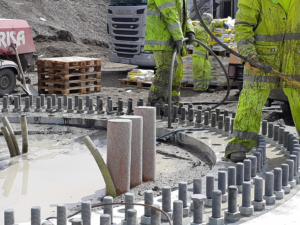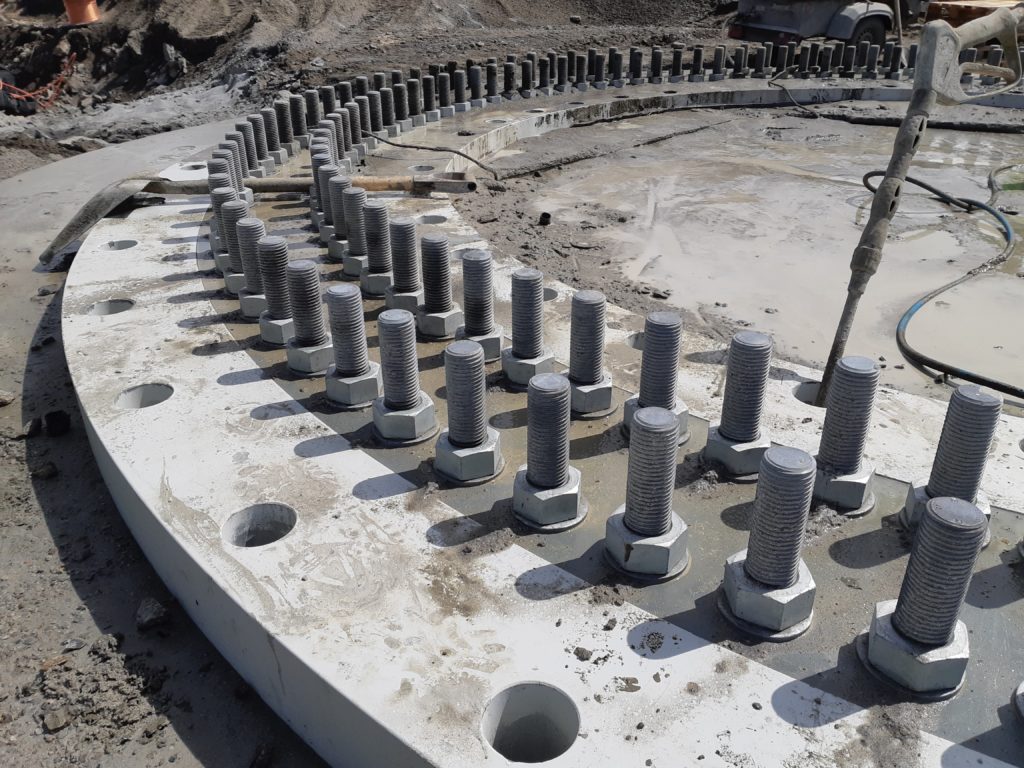Reliable Rock Anchors for Secure and Steady Foundations
In the world of civil engineering, the role of trusted rock anchors can not be overemphasized, as they are pivotal in establishing safe and secure and secure structures throughout a variety of applications. Recognizing the various kinds of rock anchors, their certain applications, and the intricacies of installment and upkeep is crucial for maximizing their efficiency.
Kinds Of Rock Anchors

Easy supports count on the weight of the framework and the bordering dirt or rock to provide resistance. Energetic supports, on the various other hand, entail the application of stress via a high-strength cable or pole, developing a pre-stressed problem in the support - Williams Anchors.
Grouted supports are an additional substantial group, in which a steel bar or cable is inserted into a pierced opening, adhered to by a cementitious cement. As soon as healed, the cement bonds with the bordering rock, producing a robust anchoring system. Each sort of rock anchor provides distinct advantages based upon the details geological problems and architectural demands, consequently playing a critical duty in the total stability and durability of built facilities.
Applications in Construction
Rock anchors play a critical duty in different construction applications, providing crucial assistance and stability in varied environments. These cutting-edge options are utilized in tasks ranging from large facilities developments to smaller sized domestic frameworks. One of the key applications of rock anchors remains in the stabilization of inclines and keeping wall surfaces, where they assist protect against soil disintegration and preserve architectural integrity.
In addition, rock anchors are crucial in protecting structures for bridges, tunnels, and skyscraper structures, ensuring they can hold up against lateral pressures such as wind and seismic task. Their flexibility permits installation in difficult geological problems, making them optimal for tasks in mountainous or rough surfaces.

Secret Option Criteria
Choosing the appropriate rock anchor for a details application requires mindful consideration of a number of vital criteria. The geological conditions of the website must be thoroughly examined. Recognizing rock type, stamina, and security is necessary to guarantee that the support will certainly perform efficiently under tons problems.

An additional essential aspect is the deterioration resistance of the support products. In settings exposed to moisture or chemicals, utilizing corrosion-resistant products will certainly prolong the lifespan of the anchors and preserve architectural honesty over time.
Additionally, the anchor's setup approach need to straighten with the project's requirements and restrictions. Alleviate of setup, along with the possible impact on surrounding structures, should be thought about.
Setup Methods
Efficient setup methods are vital for the effective efficiency of rock supports. Appropriate setup makes sure that the anchors accomplish the preferred load-bearing capacity and stability within the geological conditions. The very find more info first step in the installment procedure includes site assessment, where geological surveys determine the rock kind, problem, and any kind of prospective difficulties.
Once the site is reviewed, the ideal exploration technique should be selected-- alternatives consist of rotary boring, diamond drilling, or percussion exploration. The selection depends upon rock hardness and ecological factors to consider. Precise drilling deepness and angle are necessary to make sure that the anchors straighten with architectural requirements and lots circulation.
After drilling, the following phase involves cleansing the borehole to eliminate particles, which can jeopardize bond strength. Following this, the support is placed, and if called for, a go to this site grout or material is injected to boost bond. The curing time of these products must be followed, ensuring that the supports accomplish complete stamina prior to any type of lots is applied.
Upkeep and Assessment
Proper maintenance and inspection of rock anchors are important to guarantee their long-term efficiency and integrity (Williams Anchors). Routine analyses help recognize any prospective concerns, such as corrosion, variation, or structural tiredness that can compromise the stability of the anchoring system
Regular inspections must be performed at specified intervals, taking right into account environmental aspects and the details application of the rock anchors. Visual examinations should focus on the subjected areas of the supports, checking for indications of corrosion, splits, or other anomalies. Furthermore, it is critical to evaluate the surrounding geological conditions to discover Read More Here any type of changes in soil or rock that may influence support performance.
In some situations, even more innovative strategies such as lots testing or non-destructive testing may be required to determine the supports' load-bearing capacity and total health. Proper documentation of evaluation findings, maintenance activities, and any type of repair work or replacements carried out is important for recurring evaluation and compliance with industry standards.
Verdict
In conclusion, dependable rock anchors play a crucial role in ensuring safe and secure and secure structures throughout different building applications. By efficiently transferring loads and boosting security against lateral pressures, these supports contribute dramatically to the long life and honesty of frameworks such as bridges, tunnels, and retaining wall surfaces. Strategic choice, installation, and upkeep of rock supports are vital for optimizing efficiency and guarding public security, inevitably emphasizing their relevance in contemporary design methods.